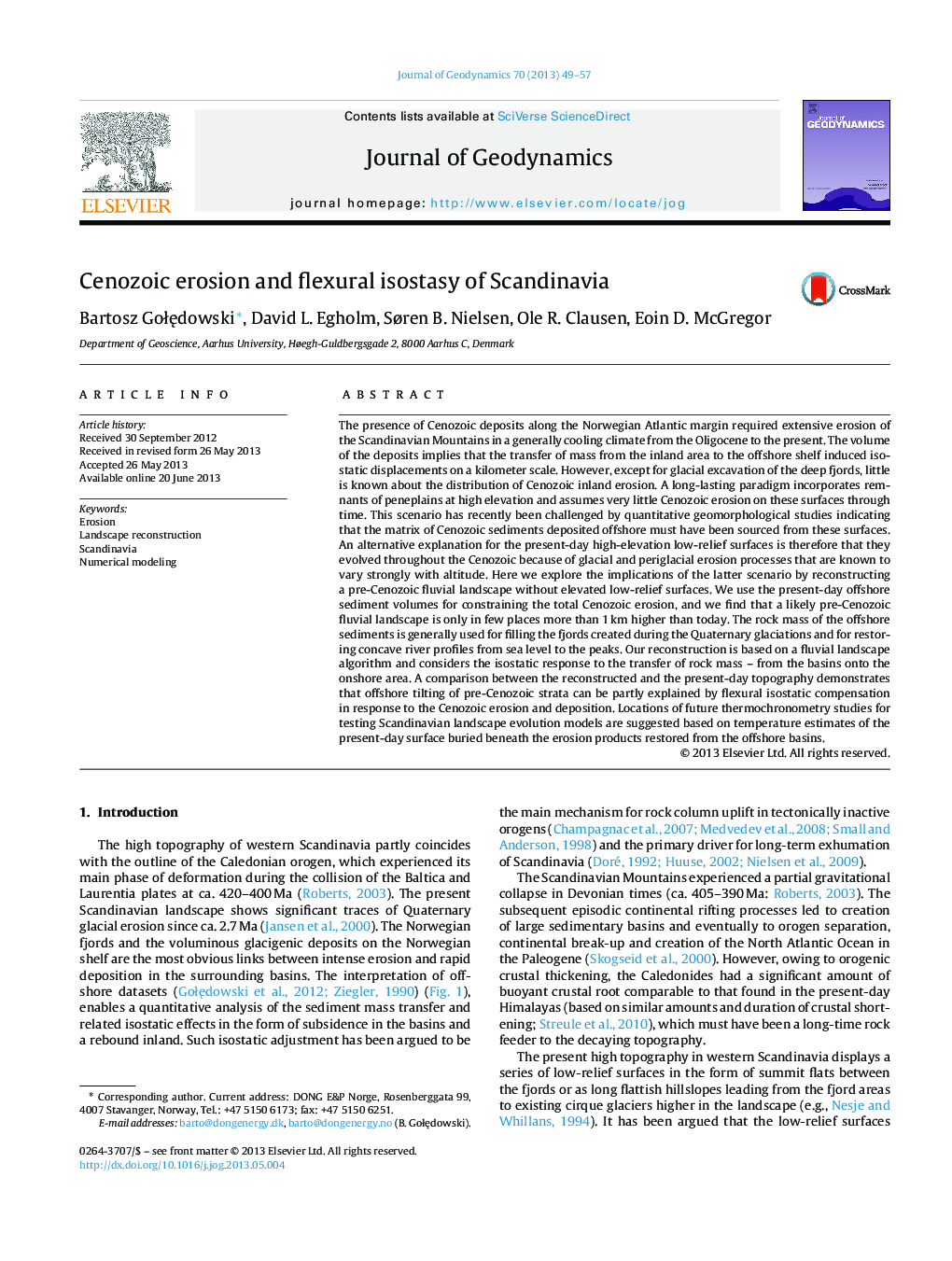| کد مقاله | کد نشریه | سال انتشار | مقاله انگلیسی | نسخه تمام متن |
|---|---|---|---|---|
| 6433138 | 1635779 | 2013 | 9 صفحه PDF | دانلود رایگان |
- We reconstruct the pre-glacial pre-Cenozoic fluvial landscape of Scandinavia.
- The numerical model is constrained by the offshore sediment record and geophysical laws.
- The isostatic movements due to erosion and sedimentation are on a kilometer-scale.
- The ridges of the reconstructed landscape are higher than the present-day snowline.
- We predict the temperature present-day land surface at the K/T boundary.
The presence of Cenozoic deposits along the Norwegian Atlantic margin required extensive erosion of the Scandinavian Mountains in a generally cooling climate from the Oligocene to the present. The volume of the deposits implies that the transfer of mass from the inland area to the offshore shelf induced isostatic displacements on a kilometer scale. However, except for glacial excavation of the deep fjords, little is known about the distribution of Cenozoic inland erosion. A long-lasting paradigm incorporates remnants of peneplains at high elevation and assumes very little Cenozoic erosion on these surfaces through time. This scenario has recently been challenged by quantitative geomorphological studies indicating that the matrix of Cenozoic sediments deposited offshore must have been sourced from these surfaces. An alternative explanation for the present-day high-elevation low-relief surfaces is therefore that they evolved throughout the Cenozoic because of glacial and periglacial erosion processes that are known to vary strongly with altitude. Here we explore the implications of the latter scenario by reconstructing a pre-Cenozoic fluvial landscape without elevated low-relief surfaces. We use the present-day offshore sediment volumes for constraining the total Cenozoic erosion, and we find that a likely pre-Cenozoic fluvial landscape is only in few places more than 1Â km higher than today. The rock mass of the offshore sediments is generally used for filling the fjords created during the Quaternary glaciations and for restoring concave river profiles from sea level to the peaks. Our reconstruction is based on a fluvial landscape algorithm and considers the isostatic response to the transfer of rock mass - from the basins onto the onshore area. A comparison between the reconstructed and the present-day topography demonstrates that offshore tilting of pre-Cenozoic strata can be partly explained by flexural isostatic compensation in response to the Cenozoic erosion and deposition. Locations of future thermochronometry studies for testing Scandinavian landscape evolution models are suggested based on temperature estimates of the present-day surface buried beneath the erosion products restored from the offshore basins.
Journal: Journal of Geodynamics - Volume 70, October 2013, Pages 49-57
